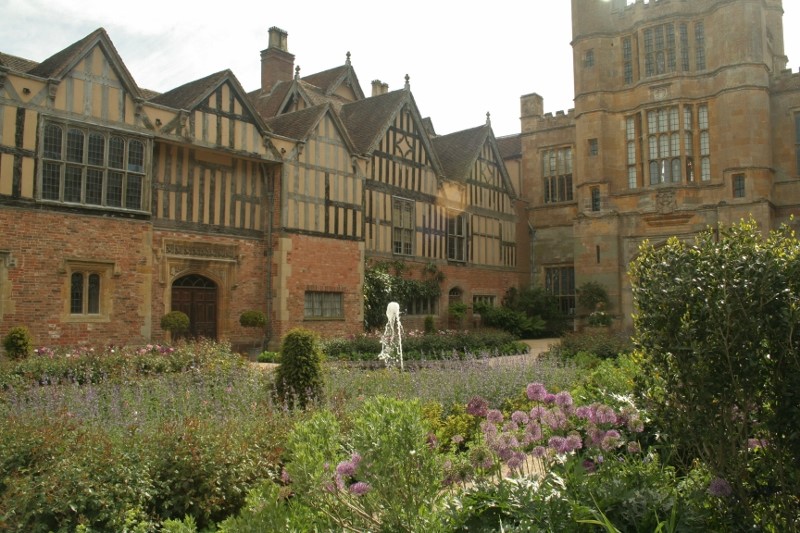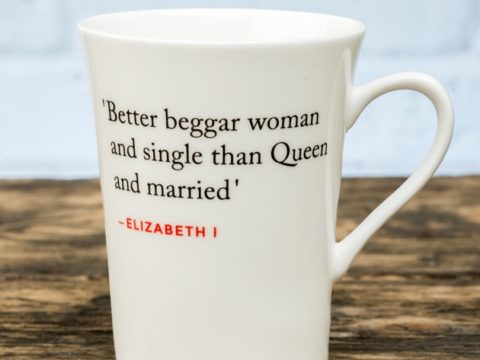Coughton Court
Gunpowder Plot and Gardens
Chapter 2 : Visiting the House
The Court itself is set nearly a half-mile off the road down a long, narrow avenue, arranged for one way traffic. There was ample parking on the day we visited.
The car park is close to the rear
of the house, so, rather disappointingly, you do not see the grand central
gatehouse as it would have appeared to 16
th century visitors.
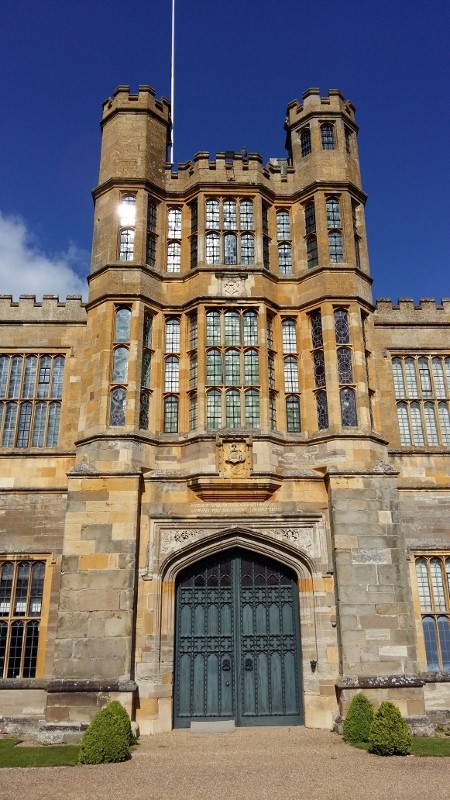
The property is managed by the National Trust, so there is a small office where you pay. Various other heritage groups have concessions, so don’t forget to ask if you are not a member.
After paying, the visit begins through the 18th century stable gateway, which leads you into a courtyard with a coffee shop, a café, WCs, a second hand bookshop and another National Trust shop. The food in the café was excellent, fresh and tasted home-made. The only disappointment was that they stopped serving the apple and rhubarb crumble at 3pm!
Through the courtyard, you turn right, passing through a beautiful yew hedge which has had an entrance cut into it.
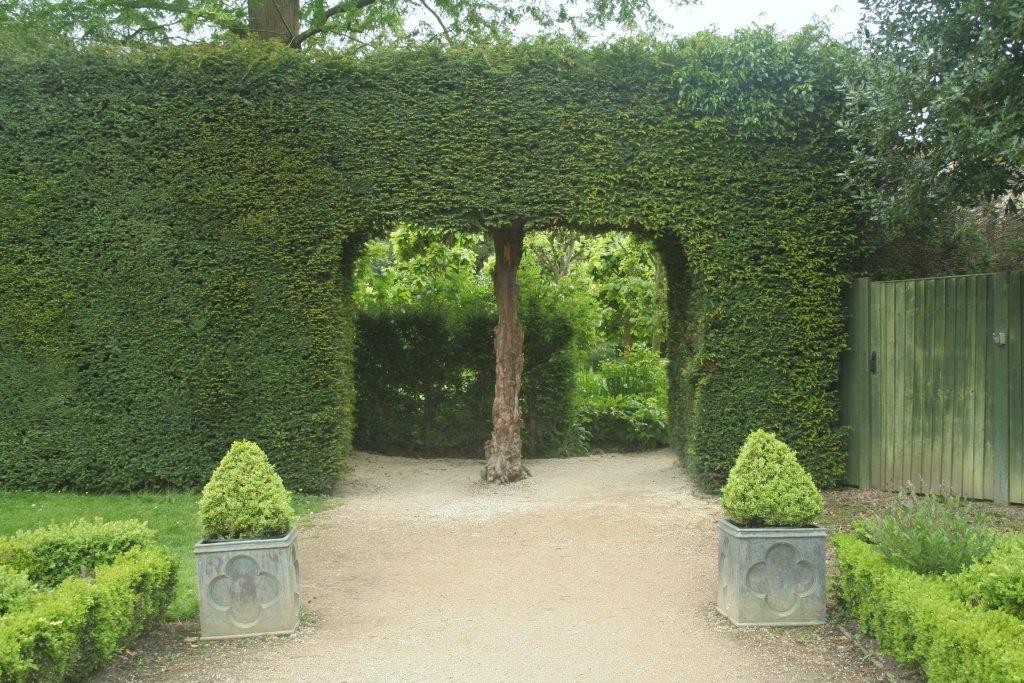
Then, on the right, the house. It is truly lovely, built in a u-shape, with the central entrance being the double tower dating from the first half of the 16 th century. The two bays on either side are not, despite appearances, Tudor, but eighteenth century. Spreading further are two symmetrical blocks in 18 th century gothic style. The north and south wings are Tudor, with later brick work on the ground floor. The central gatehouse is open to the public, all the way up to the battlements, and parts of the south wing too (on the left when looking at entrance). The north wing is private. There was once an east wing, but it was burnt down during anti-Catholic riots in the 1680s.
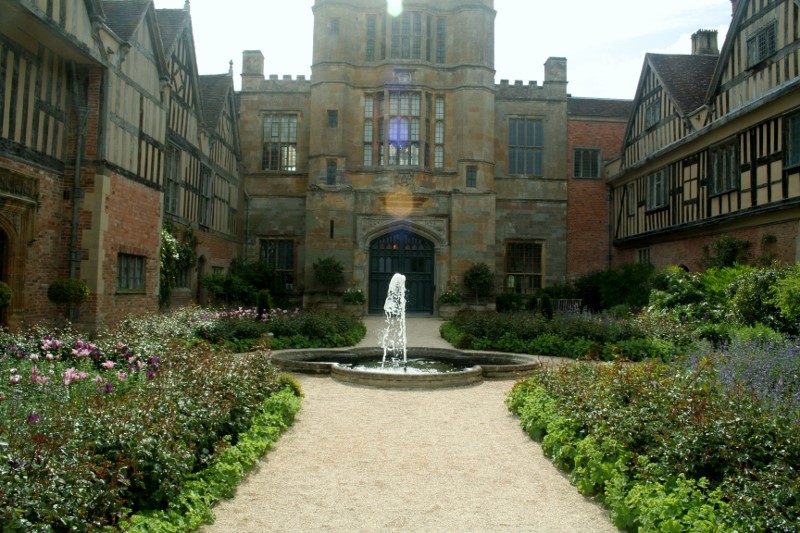
Entry is by timed ticket, and you are requested to wear bootees to protect the floors.
The entrance hall, in the ground floor centre of the Gatehouse Tower, was once open to allow horses to pass into the courtyard. It was closed in in the 1780s and has a splendid fan-vaulted ceiling. Dotted around are the usual hard hall chairs, common to old houses. There is also a splendid (and presumably extremely valuable) 16th century Flemish tapestry, showing the Rape of the Sabine Women.
Passing left into the south wing you enter the Staircase Hall, lined with portraits of the copious Throckmortons, which it is fair to say are more of historic, than artistic, interest.
At the first landing you turn right and are immediately directed up into the Tower. Up two storeys of narrow, winding stairs you emerge on the roof of the central Tower with a splendid view of the surrounding countryside. No doubt some lucky chap was permanently posted here after 1580 to watch for the puirsuivants hunting Catholic priests and Jesuits.
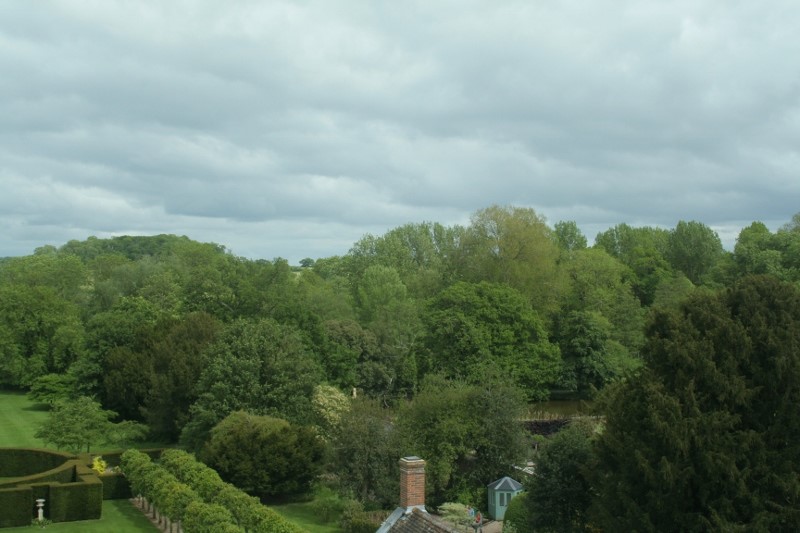
Coming down the spiral stairs, you branch off into the Tower Room about halfway down. This is the most interesting room in the House. Formerly the main sitting room for the ladies of the family, it still commands a good view, both front and back. It may also have been used as a makeshift Catholic chapel.
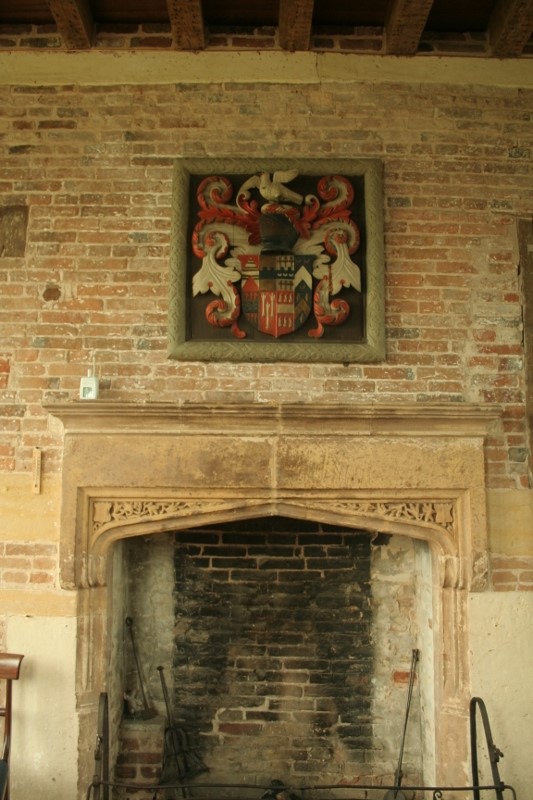
The fireplace dates from the sixteenth century, and so does the priest hole.This is one of the really scarey priest holes. The first part is well below floor level and, once in, it would have been quite tricky to climb out. But what the officers of the law might have seen when they found the hide is not all – it actually drops down a further level. It may even have originally been several storeys, leading out through the sewers. On the south wall of this room is a painting entitled ‘Tabula Elinsis’, which is a copy of a mural at Ely Cathedral, with 1590’s additions, including the coats-of-arms of Catholics imprisoned for recusancy.
Back down the spiral stair case to the top of the landing from the main entry stairs, you turn right into the delightful Blue Drawing Room which has furniture and artwork dating from the later 17 th and 18th centuries. Through this is a smaller room, the Yellow Drawing Room, with beautiful 18 th century coalport china and other porcelain. On a printed card is the text of the last letter written by Sir Walter Raleigh to his wife, Elizabeth (Bess) Throckmorton. It is a very touching expression of his love for her and their children, and his faith in God.
Back through the Blue Drawing Room and across the landing of the main stairs, you enter the south wing, specifically, the Dining Room, which was probably the Great Chamber of the Elizabethan house, the focal point for entertaining. The panelling lends a genuine air of Tudor-ness to the whole, but it is not original.
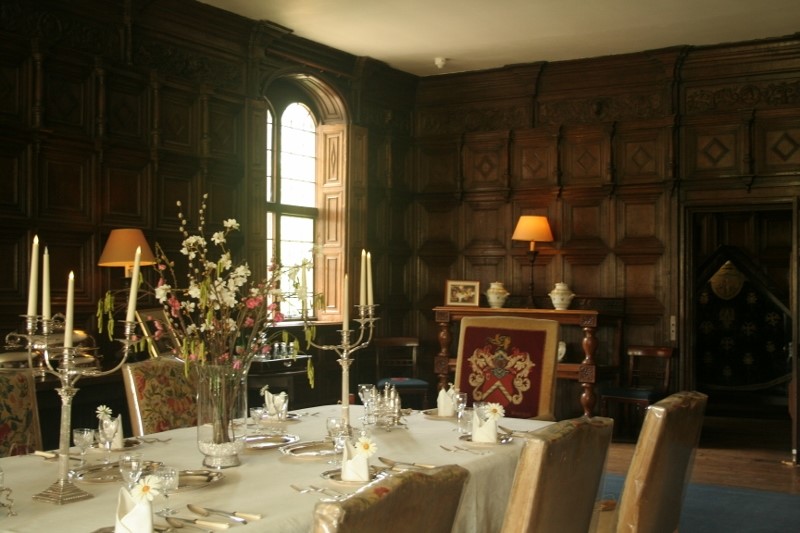
A curious relic in this room is the ancient ‘dole gate’ from Denny Abbey in Cambridgeshire where a Throckmorton daughter, Elizabeth, was Abbess at the time of the Dissolution of the Monasteries. Two 18th century style rooms are next, the Ante-Room and the Tapestry Bedroom.
A small room follows, but it is pivotal to the history of Coughton and the Throckmortons. In this space, known as the Tribune, are many of the relics and symbols of the family’s Catholic faith, and the persecution which they, and their fellow adherents to the old faith suffered. There is an early sixteenth century cope, alleged to the work of Katharine of Aragon and her ladies, and, particularly beautiful, a Book of Hours from around 1500.
In a cabinet is a white, full-length, camisole that is alleged to be the shift that Mary, Queen of Scots wore on the day of her execution. Given that there is not a spot of staining on it, and the officials were careful to burn all of the clothes the Queen wore the day she was executed, it is perhaps an unlikely story. The garment is very long, so may have been hers (Mary was nearly six foot) but not worn on that fateful day. As with Sizergh Castle, there are also many relics of the Jacobites.
The Tribune is a half-storey higher than the next room, which is the huge Saloon. The Great Hall of the Tudor house, it did service as a Chapel, after the destruction of the chapel in the original east wing, and then as the family Drawing Room.Behind the Saloon, there is another room which is decorated in the style of a mid-twentieth century ladies’ sitting room, and, opposite the exit into the courtyard.
